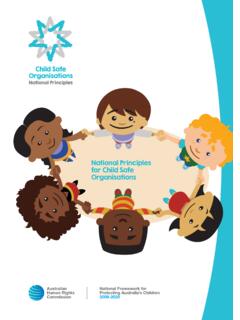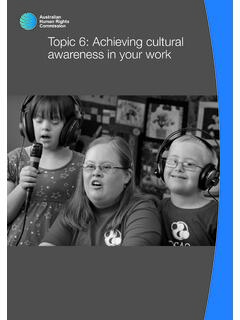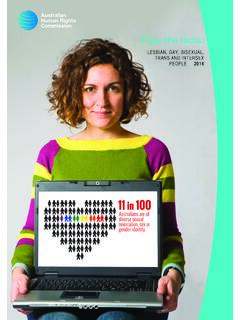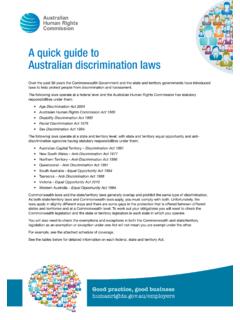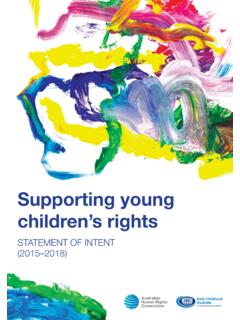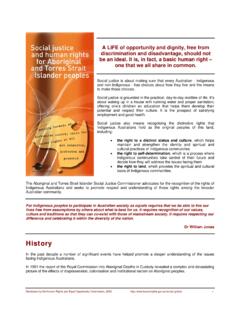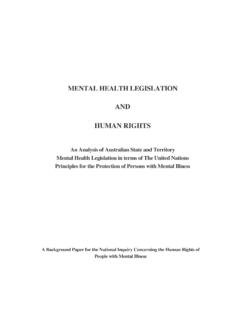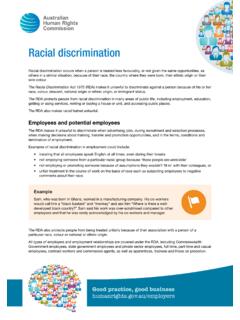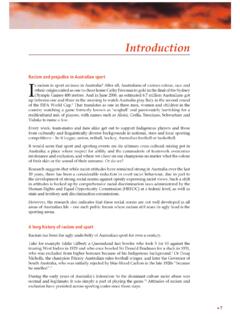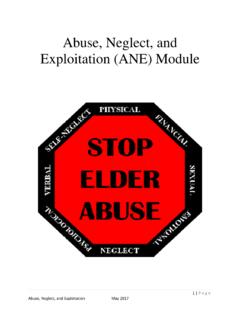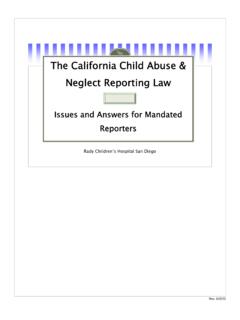Transcription of Topic 8: Legal and ethical considerations of service delivery
1 Disability Rights: Facilitating the empowerment of people with disability CHCDIS007 Trainer s Manual 2016 186 Topic 8: Legal and ethical considerations of service deliveryDisability Rights: Facilitating the empowerment of people with disability CHCDIS007 Trainer s Manual 2016 187 Topic 8: Legal and ethical considerations of service deliveryApproximate duration: 2 hours 45 minutesTopic Legal and ethical frameworks (25 minutes) Responding to service users at risk of harm (50 minutes) Protecting privacy and confidentiality (40 minutes) Managing Conflicts of interest (20 minutes) Monitoring workplace health and safety (30 minutes)Equipment needed: Audio-visual equipment with internet connection Learner Guide (pages 154-171)Disability Rights: Facilitating the empowerment of people with disability CHCDIS007 Trainer s Manual 2016 Legal and ethical frameworksApproximate duration: 25 minutesTrainer s note: Consider collecting some examples of codes of conduct and codes of ethics from service providers and/or industry bodies to help inform this section of the addition to the National Standards for Disability Services, there are a number of other important frameworks that provide guidance on how to respond to Legal and ethical issues that are likely to arise through your work as a service provider.
2 For example, most organisations will have a code of ethics and/or a code of conduct in place to inform the work of their code of ethics is a set of core ethical principles that informs and guides ethical practice within a profession. It defines the values and responsibilities that are fundamental to a particular code is intended to assist employees to act in ethically informed ways in the pursuit of the profession s values and code of conduct is described by The Ethics & Compliance Initiative as follows:A code of conduct is intended to be a central guide and reference for users in support of day-to-day decision making. It is meant to clarify an organization s mission, values and principles, linking them with standards of professional conduct. As a reference, it can be used to locate relevant documents, services and other resources related to ethics within the the time to familiarise yourself with your organisation s code of conduct and code of ethics.
3 Various industry bodies may also have their own codes that establish overarching principles to help guide your day-to-day s note: Suggest to the learners to lookup whether their workplaces or an organisation they are part of has a code of ethics or other guidelines. Provide the Australian Public service Commission s Values and Code of Conduct to learners as an example. These are available from the Australian Public service Commission Rights: Facilitating the empowerment of people with disability CHCDIS007 Trainer s Manual 2016 Responding to service users at risk of harmApproximate duration: 50 minutesTrainer s note: Research policy responses to the issue of violence and abuse of people with disability in your own state or territory to inform this section of the training . You may also wish to undertake research to see what policies and procedures some of your local aged care or disability service providers have in place to safeguard service users from violence and abuse , or have learners undertake this research as part of a homework or assessment right to be free from violence, exploitation and abuse is clearly articulated in Articles 16 of the Convention on the Rights of Persons with Disabilities (Freedom from exploitation , violence and abuse ).
4 2 The article states that:1. States Parties shall take all appropriate legislative, administrative, social, educational and other measures to protect persons with disabilities, both within and outside the home, from all forms of exploitation , violence and abuse , including their gender-based States Parties shall also take all appropriate measures to prevent all forms of exploitation , violence and abuse by ensuring, inter alia, appropriate forms of gender- and age-sensitive assistance and support for persons with disabilities and their families and caregivers , including through the provision of information and education on how to avoid, recognize and report instances of exploitation , violence and abuse . States Parties shall ensure that protection services are age-, gender- and In order to prevent the occurrence of all forms of exploitation , violence and abuse , States Parties shall ensure that all facilities and programmes designed to serve persons with disabilities are effectively monitored by independent States Parties shall take all appropriate measures to promote the physical, cognitive and psychological recovery, rehabilitation and social reintegration of persons with disabilities who become victims of any form of exploitation , violence or abuse , including through the provision of protection services.
5 Such recovery and reintegration shall take place in an environment that fosters the health, welfare, self-respect, dignity and autonomy of the person and takes into account gender- and age-specific States Parties shall put in place effective legislation and policies, including women- and child-focused legislation and policies, to ensure that instances of exploitation , violence and abuse against persons with disabilities are identified, investigated and, where appropriate, Rights: Facilitating the empowerment of people with disability CHCDIS007 Trainer s Manual 2016 190 Violence towards people with disability in AustraliaAlarmingly, the rate of abuse of people with disability in Australia is still extremely high. Statistics tell us that women with disability in particular are four to ten times more likely to face abuse than women without disability, and that around 90% of women with intellectual disability experience sexual abuse at some point in their with disability are also far more likely to experience sexual abuse and other forms of violence than children without question: What factors do you think might contribute to the high rate of abuse of people with disability in Australia?
6 Points to inform discussion: people being placed in institutional settings or secluded environments people not being aware of their rights or how to ensure that they are upheld barriers to accessing the justice Rights: Facilitating the empowerment of people with disability CHCDIS007 Trainer s Manual 2016 191 Viewing activityVideo: In Our Care Source: Four CornersDuration: 46 minutes 40 secondsSummary: In this joint Four Corners/Fairfax investigation, broadcast on the ABC on 24 November 2014, reporter Nick McKenzie reveals the details of a major scandal involving Yooralla, one of the country s largest providers of services to people with disability. The video paints a vivid picture of some of the issues faced by people with disability in residential and institutional :1. Before playing the video, you should explain that it talks about sexual abuse of people with disability in graphic detail.
7 Allow learners to excuse themselves if they do not feel comfortable with Encourage class discussion at the end of the viewing Rights: Facilitating the empowerment of people with disability CHCDIS007 Trainer s Manual 2016 192 Discussion question: This Four Corners report focuses on sexual abuse , but abuse can come in various forms. What are some other forms of abuse ?Points to inform discussion: Psychological/emotional abuseEmotional abuse is any act which lowers a person s dignity and self-worth. This may include regularly yelling at, criticizing, threatening, humiliating or isolating a person with Physical abusePhysical abuse is any act of violence or rough treatment that causes injury or discomfort, such as slapping, pushing or hitting. It may include over or under-medicating and the use of physical Financial abuseFinancial abuse is any act which involves misusing the money or property of a person with disability without their full knowledge and consent.
8 This includes theft of money, pension cheques or property as well as misuse of a power of NeglectNeglect happens when a caregiver does not properly care for and attend to a person with disability who cannot fully look after him or herself. neglect can be intentional or unintentional. It may include withholding food, personal hygiene care, health services, clothing, help or companionship. neglect may also be self- neglect . This happens when a person refuses, delays or is unable to arrange for his or her own care and question: What are some warning signs that might indicate that someone could be experiencing violence, abuse or neglect ???Disability Rights: Facilitating the empowerment of people with disability CHCDIS007 Trainer s Manual 2016 193 Reference sheet: Indicators of Abuse9 Indicators of Physical abuse fear of caregivers unexplained injuries delay in seeking treatment over-sedation unusual patterns of bruises history of changing doctors scalp injuriesIndicators of Emotional abuse low self-esteem appears nervous around caregiver confused suicidal avoids eye contact with caregiver fear of abandonment lethargic/withdrawnIndicators of Sexual abuse unusual fear of person stained.
9 Torn or bloody clothes pain and bruising change in sexual behaviour pregnancy sexually transmitted diseasesIndicators of Financial abuse unexplained missing items failure to pay bills inaccurate knowledge of finances suddenly changing a will going without affordable necessities unusual withdrawals from bank accountIndicators of neglect malnourishment wandering without supervision lack of heat/electricity unkempt appearance missing dentures, glasses, hearing aids skin conditions or pressure sores untreated medical problems alcohol or medicationDisability Rights: Facilitating the empowerment of people with disability CHCDIS007 Trainer s Manual 2016 194 Responding to abuseArticle 12 of the Convention on the Rights of Persons with Disabilities states that:States Parties shall ensure that all measures that relate to the exercise of Legal capacity provide for appropriate and effective safeguards to prevent abuse in accordance with international human rights we have already covered, people with disability have the same right as everyone else to live a life free from violence, exploitation and your role, protecting this right and ensuring that services users are safe is part of your duty of you reasonably suspect that a service user is at risk of harm, whether it be physical or otherwise, and you do not take steps to address this risk.
10 You are failing in your duty of community service providers should have their own policies and procedures in place to provide guidance on what to do if a service user is found to have been a victim of is a core requirement under the National Standards for Disability Standards for Disability ServicesIndicators of PracticeStandard 1: Rights1:5 The service has preventative measures in place to ensure that individuals are free from discrimination, exploitation , abuse , harm, neglect and should familiarise yourself with your organisation s policies and procedures and respond in accordance with these guidelines if an incident does speaking, the following steps should be followed: If necessary, provide medical assistance. Remove the source of harm and ensure that the service user is safe from further abuse . Explain what is happening to the service user and reassure them that it is not their fault.
